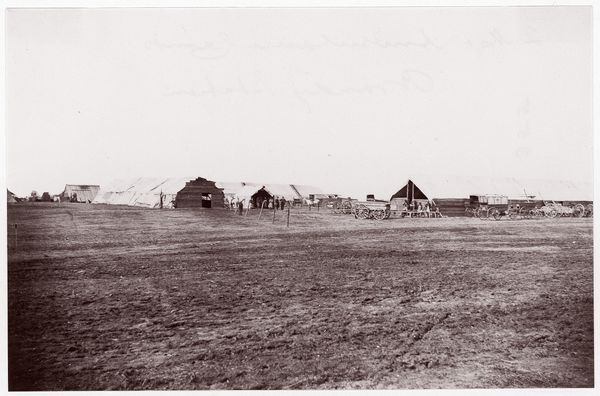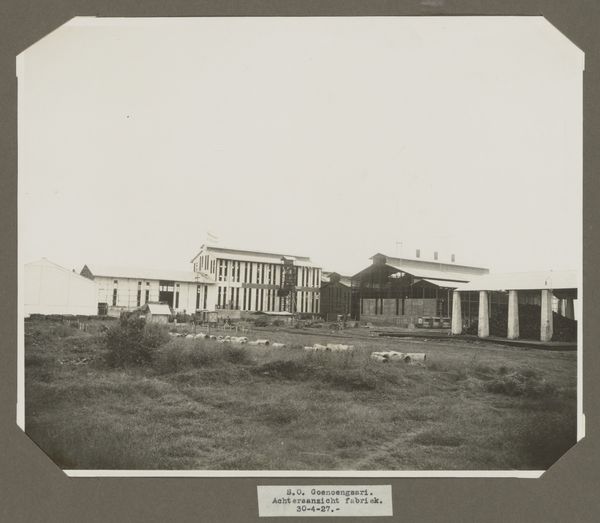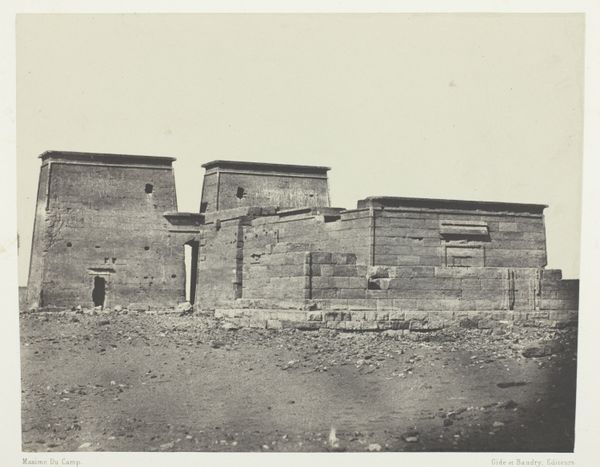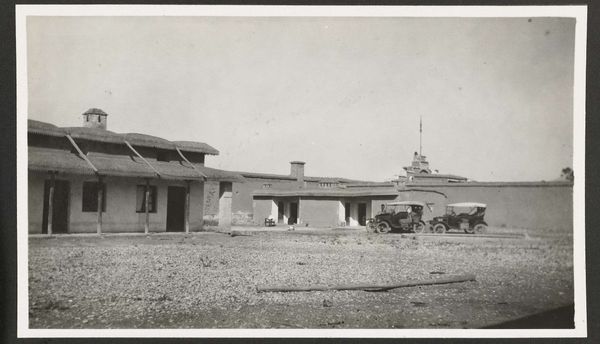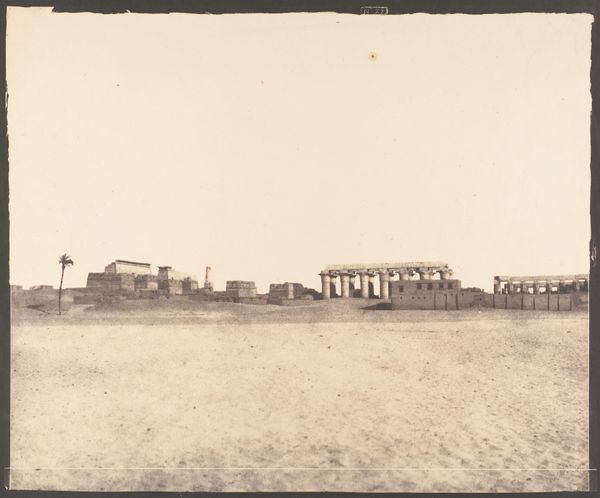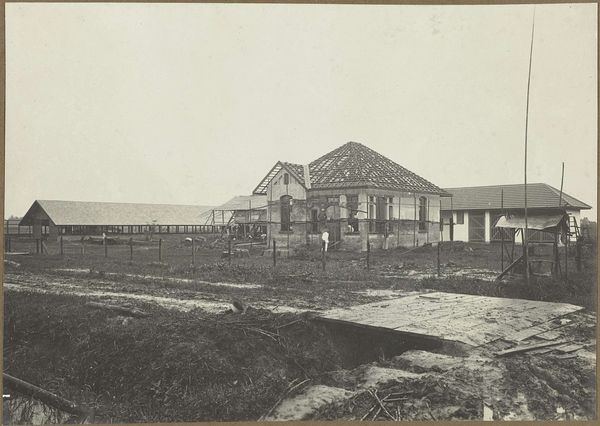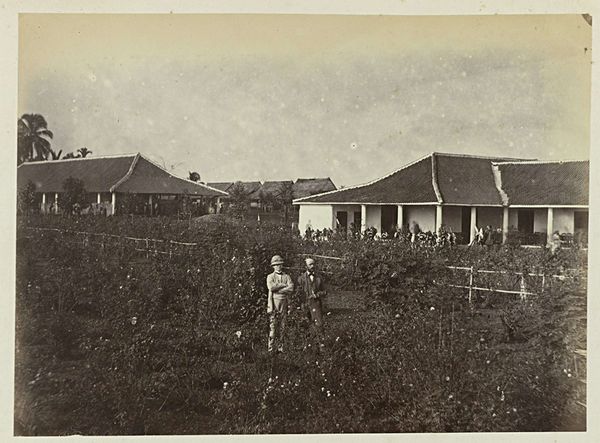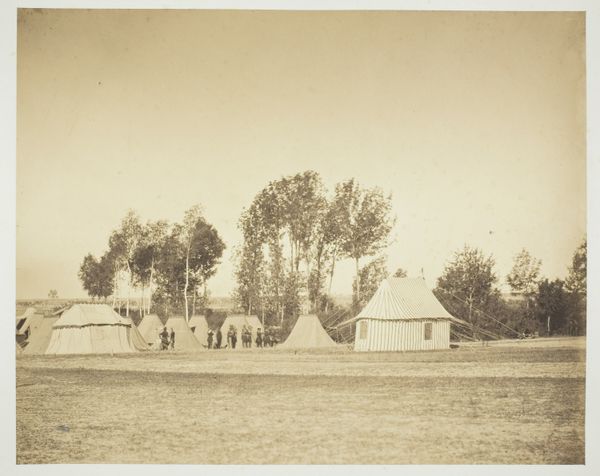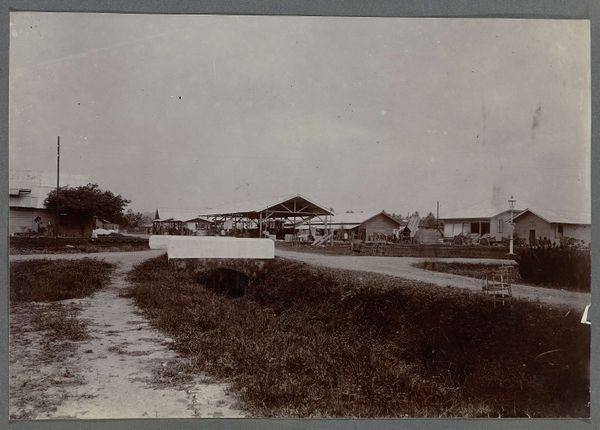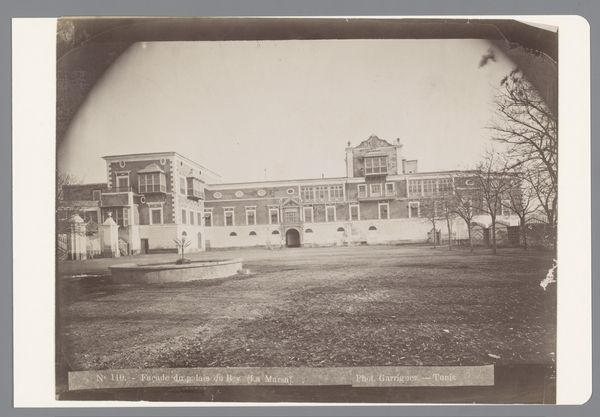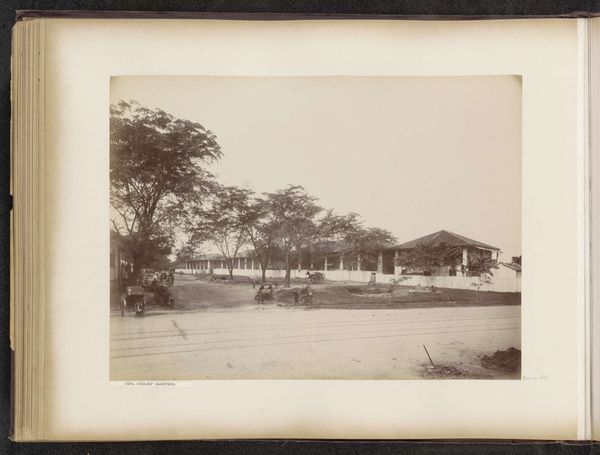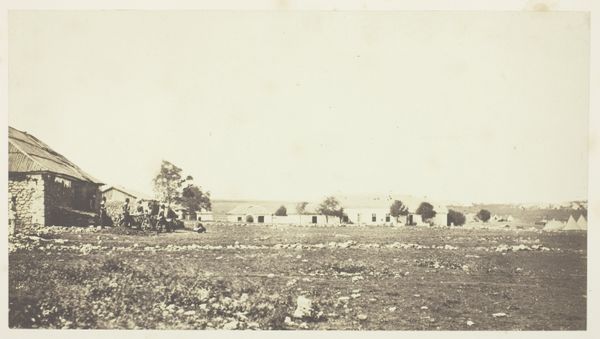
print, photography
# print
#
landscape
#
outdoor photograph
#
outdoor photography
#
photography
#
realism
Dimensions: height 82 mm, width 109 mm
Copyright: Rijks Museum: Open Domain
Editor: So, this is "Treinstation in Laurion," taken by Johannes Lodewijk Heldring in 1898. It’s a photograph, capturing what I find to be quite a desolate, yet strangely captivating, scene of a train station. What stands out to you when you look at this? Curator: I immediately see the labor embedded within this image, both directly and indirectly. Consider the raw materials: the stone used to construct the station. Where did that stone come from? Who quarried it, and under what conditions? The image becomes a document of 19th-century industrial labor. Editor: That's a really interesting point. I was focusing on the overall composition, but you're bringing it down to the physical creation. What about the context surrounding it? Curator: Absolutely. The construction of this train station speaks to the broader economic ambitions of the era, the rise of industrial capitalism, and the drive to connect resources to markets. Laurion, known for its mines, was crucial. How does this photograph function as evidence of resource extraction? We need to question whose interests this infrastructure served. Editor: So you're seeing it as less a picture of a station and more a record of the economic forces at play at the time? Curator: Precisely. It highlights how photographic processes themselves were intertwined with these systems. Photography was becoming industrialized, made accessible, but its content often reinforced dominant power structures. The seemingly neutral landscape, then, is laden with socio-economic meaning. The presence of those figures around the station are crucial here. Who are they? How are they implicated in the industries here? Editor: I never thought of a landscape photograph in that way. It definitely gives me a lot to consider regarding the process and cultural narrative. Thanks for sharing your thoughts. Curator: My pleasure. Thinking about materiality can radically transform how we approach art history. It grounds us in the tangible realities of creation.
Comments
No comments
Be the first to comment and join the conversation on the ultimate creative platform.
